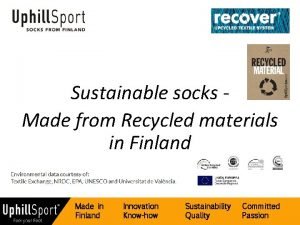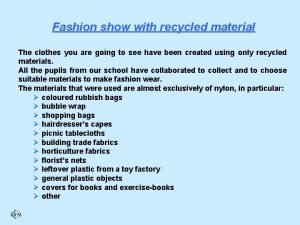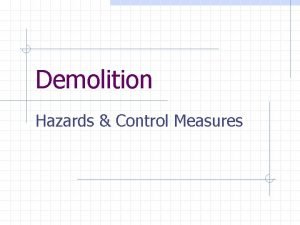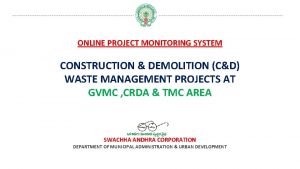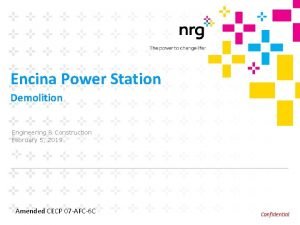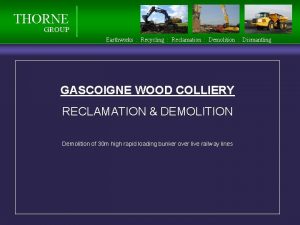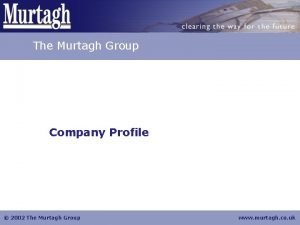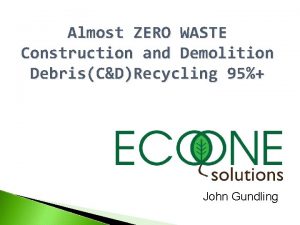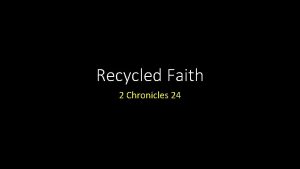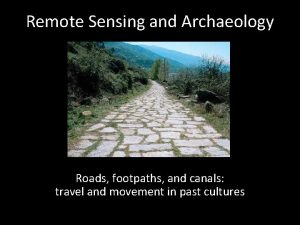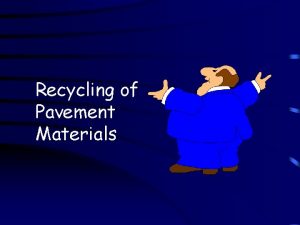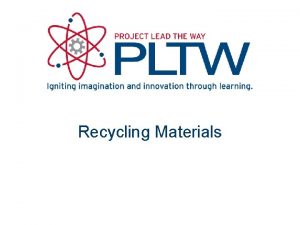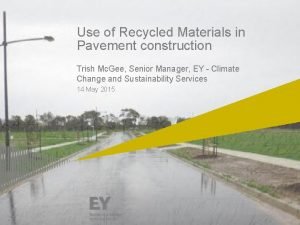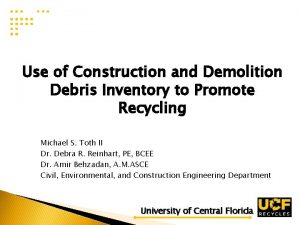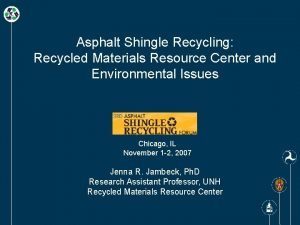USE OF RECYCLED DEMOLITION MATERIALS FOR FOOTPATHS AND










- Slides: 10

USE OF RECYCLED DEMOLITION MATERIALS FOR FOOTPATHS AND SHARED PATHS Geotechnical laboratory testing results A/PROF ARULRAJAH – Swinburne University of Tech, Melbourne, Australia 1

RESEARCH BACKGROUND 2

Swinburne research projects on Construction and Demolition (C&D) Materials 1. Recycled demolition materials in footpaths and shared paths, Funded by Municipal Association of Victoria, June 2009 December 2009. 2. Crushed brick in pavement sub-base applications, Funded by Sustainability Victoria, August 2007 -May 2008. 3. Laboratory testing of crushed glass in pavement sub-base applications, Funded by Sustainability Victoria, June 2009 -May 2010. 4. Field testing of crushed glass in pavement sub-base applications. Funded by Recycling Industries (Alex Fraser); Visy Recycling; National Packaging Covenant, November 2009 to June 2011. 3

Construction and Demolition (C&D) Materials v 32 million tonnes of solid waste is generated in Australia. Approximately 14 million tonnes comprises construction and demolition (C&D) waste, of which about 50% is recycled. v. Recycled concrete, brick and glass are commonly obtained from household recycling, construction and demolition (C&D) activities. v. Currently in Victoria, 1. 4 million tonnes of crushed brick and 250, 000 tonnes of crushed glass are stockpiled annually and these stockpiles are growing. 4

Recycled Demolition Materials v. Traditional footpath materials are becoming scarce in some regions. v. In some cases, the use of these materials is unsustainable from both an environmental and cost perspective. v. This has led to this project to investigate the usage of recycled crushed glass, crushed brick in blends with crushed rock and crushed concrete in footpath subbase applications. 5

Recycled Demolition Materials v. These project seeks to reduce the demand for virgin materials and reduce the quantity of material deposited in landfill. v. These projects have investigated the usage of – recycled crushed brick/crushed glass in blends up to: • 50% with crushed rock and crushed concrete in footpath base and sub-base applications. • 30% with crushed rock and crushed concrete in pavement subbase applications 6

PREVIOUS SPECIFICATIONS FOR FOOTPATH AND SHARED PATHS Based on Vic. Roads Specifications (section 812 and 820) 7

Schematic diagram of a typical low volume road pavement cross-section 25 mm 100 -250 mm 150 -300 mm Asphalt Wearing Surface Pavement Base (Class 1 & 2) Pavement Sub-base (Class 3) 8

Vic. Roads 2009 specifications (Section 820) Allowable foreign material content (%) Foreign Material Type High density materials (previously glass, brick) Crushed brick and glass (to be considered as an additive instead of a foreign material: as a result of research by Swinburne) Class CC 2 Class CC 3 Class CC 4 2 3 5 2 15 25 9

Vic. Roads 2009 specifications (Section 820)recycled crushed concrete pavement subbase Test Value Test Class CC 2 Class CC 3 Class CC 4 Liquid Limit % (Max) 35 35 40 Plastic Index (Max) 6 10 20 California Bearing ratio % (Min) 100 80 15 Los Angeles Abrasion Loss (Max) 30 35 40 Flakiness Index (Max) 35 - - 10
